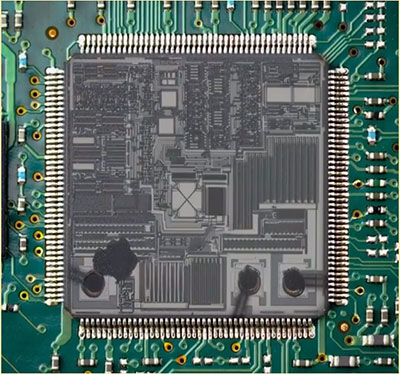What is ESD (Electrostatic Discharge) and How to Prevent it?
ESD, or electrostatic discharge, occurs when there is an imbalance of electrons between two materials that come into contact and cause a sudden transfer of electrical potential. We’ve all played around with it before; cue being a kid at a birthday party where a family member rubs a balloon on your head to make your hair stand on end or walking across a room only to touch a doorknob and feel a shock.

Ok, but how does it relate to DigiKey? Well, while these small shocks may feel like no big deal, they actually pack quite a punch of voltage; over 3000 volts, to be exact. That’s right, anything less than 3000 volts can’t be heard, felt, or seen by a human. Wait, shouldn’t that be deadly? Not in this case, thankfully, because the voltage doesn’t carry enough charge to sustain a harmful current flow. However, these voltages can be catastrophic to components sensitive to ESD, with some components being sensitive to less than 10 volts of ESD.
The trickiest part isn’t that you might shock a component and not realize it, but that in most cases there are no signs of damage visual to the naked eye. This means that if you believe a component has been improperly handled, the only way to know is via a microscope, X-ray imaging, or testing it in a field situation - which could cause more harm.

Some of the most sensitive components could end up in end products such as medical equipment; I don’t even want to think of the potential outcome an improperly handled component could have in that situation.
Thankfully, there are industry standards in place to help protect ESD sensitive devices. When protecting your ESD sensitive products or writing your ESD Control Program, the first thing you need to know is the sensitivity of the most sensitive device handled in your process. The ESD Association has two models: the Human Body Model (HBM) and the Charged Device Model (CDM). The foundation of any ESD Control Plan begins by following the (American National Standards Institute) ANSI/ESD S20.20 standard.
 (Image source: ESD Association)
(Image source: ESD Association)
The ANSI/ESD S20.20 protects products with sensitivities of greater than or equal to 100 V Human Body Model or greater than or equal to 200 V Charged Device Model. This standard is also a great basis for protecting a highly sensitive device with sensitivities less than 100 V HBM or 200 V CDM.
Following the precautions set forth by this standard and taking extra precautions where necessary will help keep sensitive devices safe and prevent an ESD event from occurring. Thankfully DigiKey carries a variety of ESD safety items such as grounding equipment, ESD shielding bags, and so much more to help you on your journey to safe ESD practices.

Have questions or comments? Continue the conversation on TechForum, DigiKey's online community and technical resource.
Visit TechForum












